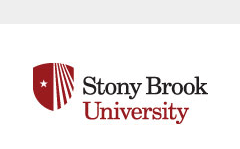Document Type
Full Paper
Location
Charles B. Wang Center
Event Website
http://www.centerfornewsliteracy.org/globalconference2017/
Keywords
massive open online course, Coursera, news literacy, journalism, media, news, assessment, pedagogy, critical thinking, civic engagement
Start Date
8-14-2017 4:30 PM
End Date
8-14-2017 6:00 PM
Description
This paper explores the pedagogical approach of a Massive Open Online Course (MOOC) on news literacy as a case study. The six-week MOOC on Coursera, Making Sense of the News: News Literacy Lessons for Digital Citizens, was launched on January 9, 2017, jointly by the Journalism and Media Studies Centre at the University of Hong Kong and the Center for News Literacy at Stony Brook University. The course is being offered to students worldwide on a rolling basis throughout the year; as of March 16, 2017, more than 4,700 people around the world have registered for the course and 2,800 of them have been actively engaged with the course materials. The preliminary evaluation of the course presented in this paper discusses the process of creating content for a global audience. It includes a summary of the observed strengths and weaknesses of the learning materials and online teaching and learning platform, drawing on the analysis of the curriculum development, instructional design and technological architecture as well as the content of online forum discussions. The quantitative side of the research delves into students’ demographic data, the entrance and exit survey results, and the interactions between each learner and the learning materials logged by the system that recorded every single mouse click, video player control and other active participation by the learners. These findings will inform future directions of internet-based news literacy education in today’s technologically interconnected societies. In the concluding section the paper discusses how other educators could contribute to the future development of the online course and suggests ways for them to create a specialized pedagogical model based on the MOOC for news consumers in countries with different access to information. It also identifies potential key partners for future collaboration in order to promote news literacy education and provide more personal and timely learning experiences for the students.
Included in
Lesson learned: Pedagogical insights gained from the MOOC, Making Sense of the News
Charles B. Wang Center
This paper explores the pedagogical approach of a Massive Open Online Course (MOOC) on news literacy as a case study. The six-week MOOC on Coursera, Making Sense of the News: News Literacy Lessons for Digital Citizens, was launched on January 9, 2017, jointly by the Journalism and Media Studies Centre at the University of Hong Kong and the Center for News Literacy at Stony Brook University. The course is being offered to students worldwide on a rolling basis throughout the year; as of March 16, 2017, more than 4,700 people around the world have registered for the course and 2,800 of them have been actively engaged with the course materials. The preliminary evaluation of the course presented in this paper discusses the process of creating content for a global audience. It includes a summary of the observed strengths and weaknesses of the learning materials and online teaching and learning platform, drawing on the analysis of the curriculum development, instructional design and technological architecture as well as the content of online forum discussions. The quantitative side of the research delves into students’ demographic data, the entrance and exit survey results, and the interactions between each learner and the learning materials logged by the system that recorded every single mouse click, video player control and other active participation by the learners. These findings will inform future directions of internet-based news literacy education in today’s technologically interconnected societies. In the concluding section the paper discusses how other educators could contribute to the future development of the online course and suggests ways for them to create a specialized pedagogical model based on the MOOC for news consumers in countries with different access to information. It also identifies potential key partners for future collaboration in order to promote news literacy education and provide more personal and timely learning experiences for the students.
https://commons.library.stonybrook.edu/cnlglobalconference/cnl2017/one/5

